Ceropegia Woodii
By: Daniel Greiner
History:
Ceropegia Woodii is native to South Africa, Swaziland, and Zimbabwe. When the plant was first discovered in 1881 it was found hanging from rocks at an altitude of 1800 ft. Later the first specimen was grown at the Kew Gardens in 1894. it appears that it was in limited distribution throughout the mid 1900’s. A few herbarium specimens from the 1940’s still capture the plants interesting flowers and leaves.
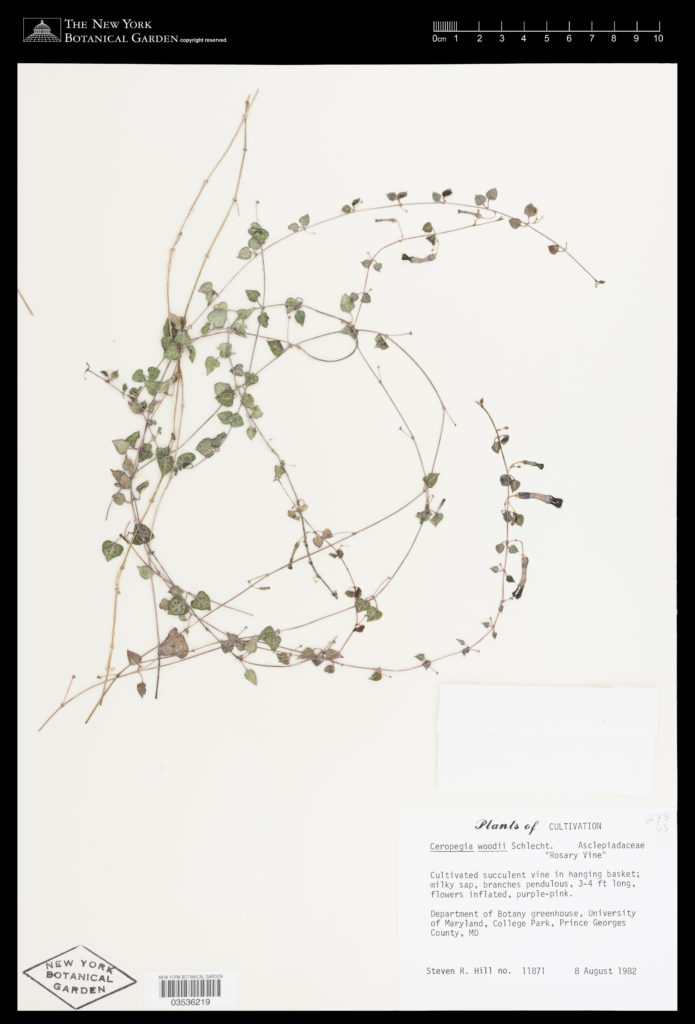
Fast forward to 2019 and its been a good 130 years since the first introduction of this plant. It amazes me how quickly people forget the existence of things. This plant for all its merit should still be today as popular as it was 100 years ago and yet its been forgotten.
Currently this plant is enjoying a new surge of interest as it has been “rediscovered” by plant enthusiasts too young or unaware to realize it’s grandmas plant. With the advent of social media and things like Pinterest these plants are now gaining the advantage of wider exposure.
I have been growing this plant since I was a child, however I will admit that I rarely ever see them available for sale and when I have the prices are extremely high.
Description:
A succulent vine reaching 2-4 meters with heart shaped leaves arranged in opposite pairs. The top of the leaves are lightly textured with the raised portions being dark green to purple in high light, or light green in lower light. The portions not raised are silvery in color with a suffusion of purple. The edge of the leaf is also trimmed in the darker or lighter shade of green. Undersides of the leaves can vary from dark purple to light green again depending on light as the variable. leaves become noticeably thicker after watering versus when there has been a prolonged period of drought. leaves appear to hook onto things quite well and may assist with the vines in scrambling up through low brush. These vines do not have tenderals so do not possess the capacity to cling to support but rather use other mechanisms such as the leaves to hang to their supports. I suspect the vine grows in areas with little competition for light and primarily creeps across the ground.
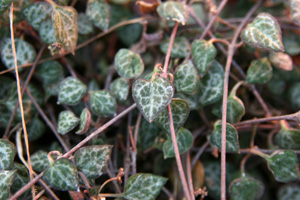
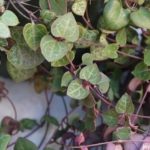
Inter node length is greatly influenced by light and plants in lower light can have as much as 2-3 inches between leaf pairs.
Flowers are produced from the leading growing tip and are constantly produced in sufficient light. The base of the flower is bulbous with a slimmer column that meets the dark velvety cap like a small inverted pink vase. The cap is made up of 5 comma shaped petals that fuse together at the top creating a cage. The overall color of the flower is light purple on the lower portions to dark purple at the cap.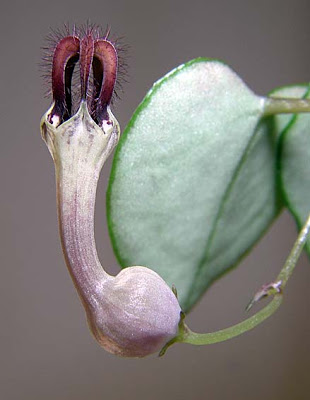
Pollination for this species is truly fascinating. Ceropegia rely on Midges to pollinate their flowers. Each species of Ceropegia use different floral attractants to draw in species best suited for pollination. As soon as the top of the flowers opens it begins to emit a scent that draws the midge to it. The midges that are attracted are always female and the insects forces itself between the hairs in the ‘lantern’ appearing top. It then encounters hairs that are downward pointing forcing the insect to proceed downward to the bulbous base where the pollen and anthers are. There are special nectaries located at the base of the anthers and as the midge drinks the sweet nectar it picks up the pollen and deposits the pollen its currently carrying onto the stigma.
Once the flower is pollinated the stockade of hairs withers and the flower bends through 90 degrees on its stalk, so the chimney is horizontal and the midges, carrying pollen, can escape.
The flower will then begin to produce an elongated pod similar to a milkweed. If the Midge pollinated more than one stigma you will get two pods forming as a pair opposite to the old floral stem.
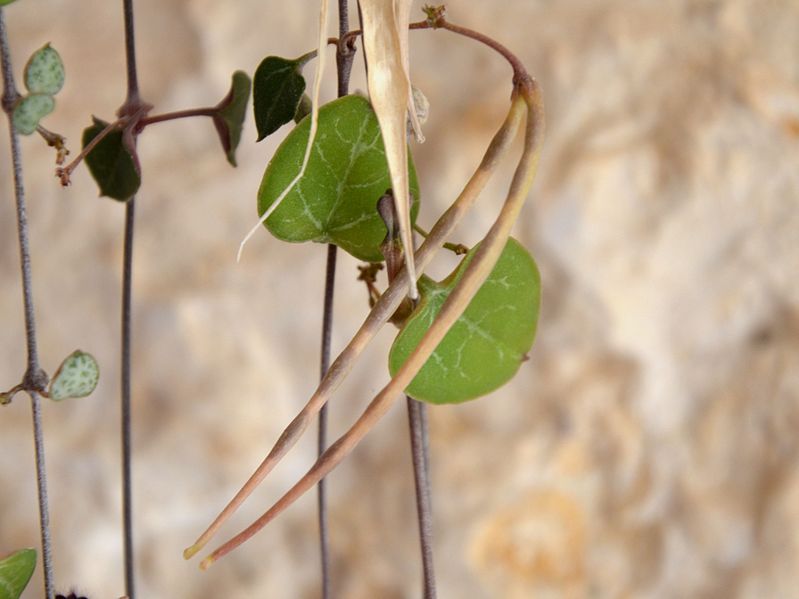
Cultivation:
It’s long pendulous stems allow for it to be grown in hanging baskets or pots. It makes no attempt to grow upwards and will produce perfectly strait vines that rarely branch. Most of the new shoots appear from the hidden potato like tubers although these will also appear along the stem periodically.
The plant stores water in these tubers as well as in their fleshy leaves. This allows them to go through short periods of drought. Indoor plants are usually potted in a peat based mix that retains moisture for much longer and caution should be made to not over water. this plant typically should be watered once a week to more likely once every two weeks. Because this vine grows so vigorously you should fertilize the plant at every watering.
Plants seem to be very tolerant of a wide variance of light conditions. They do best in bright indirect to partial direct sunlight. I have seen many people who have successfully grown this plant quite a distance from a bright window and have it do well. Observe the inter node length to help you determine if its getting enough light.
Propagating this plant is slow and requires patience. Plants can easily be propagated by taking 4-5 inch tip cuttings and laying them on the surface of moist potting soil till they root in, or placing the base of the stems in water until roots form. Additionally you may harvest the tubers and plant them. If using tubers for propagation you must not over water. I like to fill a pot with potting soil with a generous amount of perlite and then sprinkle about a quarter inch of perlite on the very top and bury your tubers till the tops are just barely visible under the perlite. keep barely damp unit you see lots of new vines flush out.
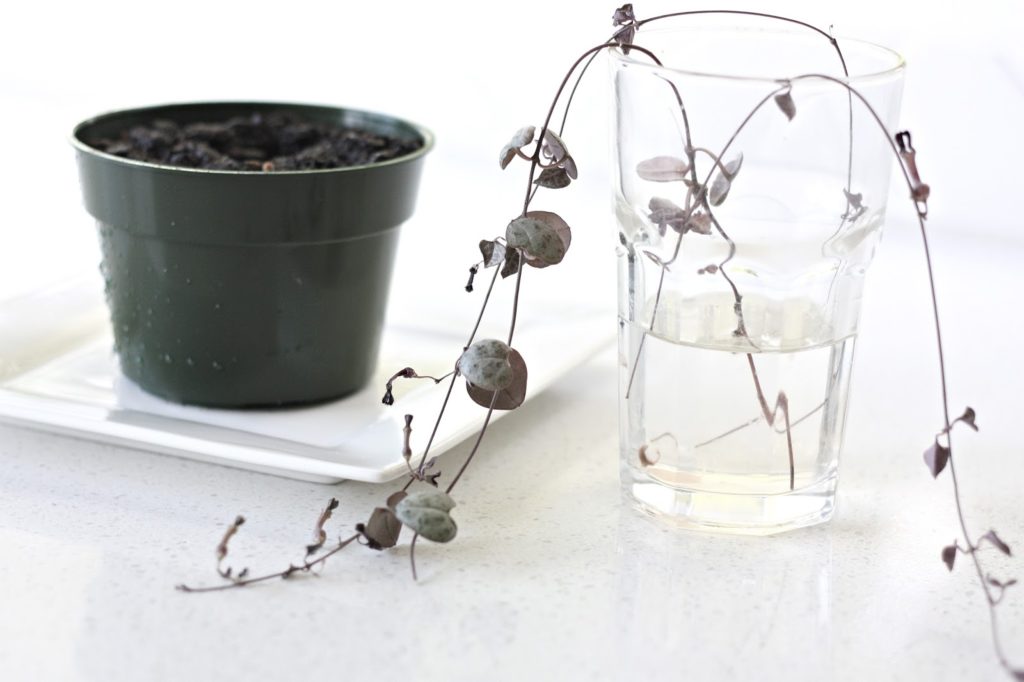
I highly encourage you to grow this as it has lower light demands than many succulents. I also want you to remember that plants like this should not be grown just because it is currently fashionable, but because they are truly unique and worthy of a space in your home.

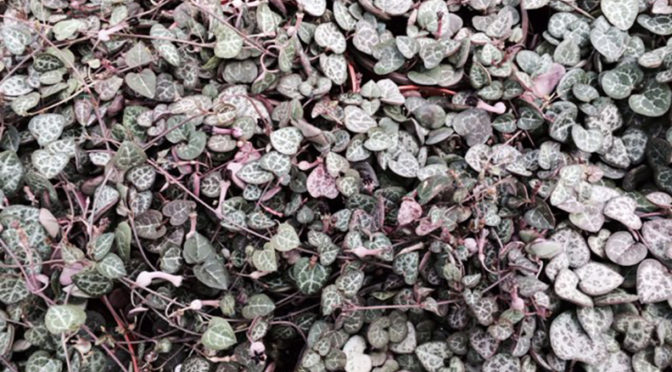
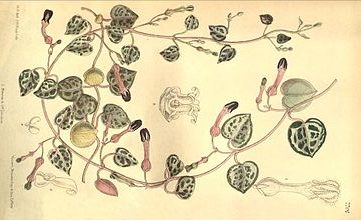
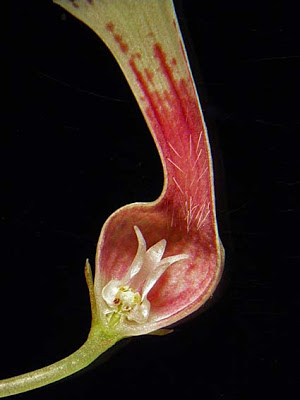
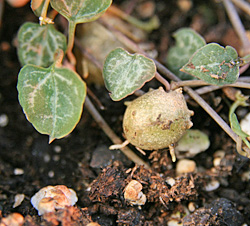
This post was very helpful and full of fantastic information! Thank you!